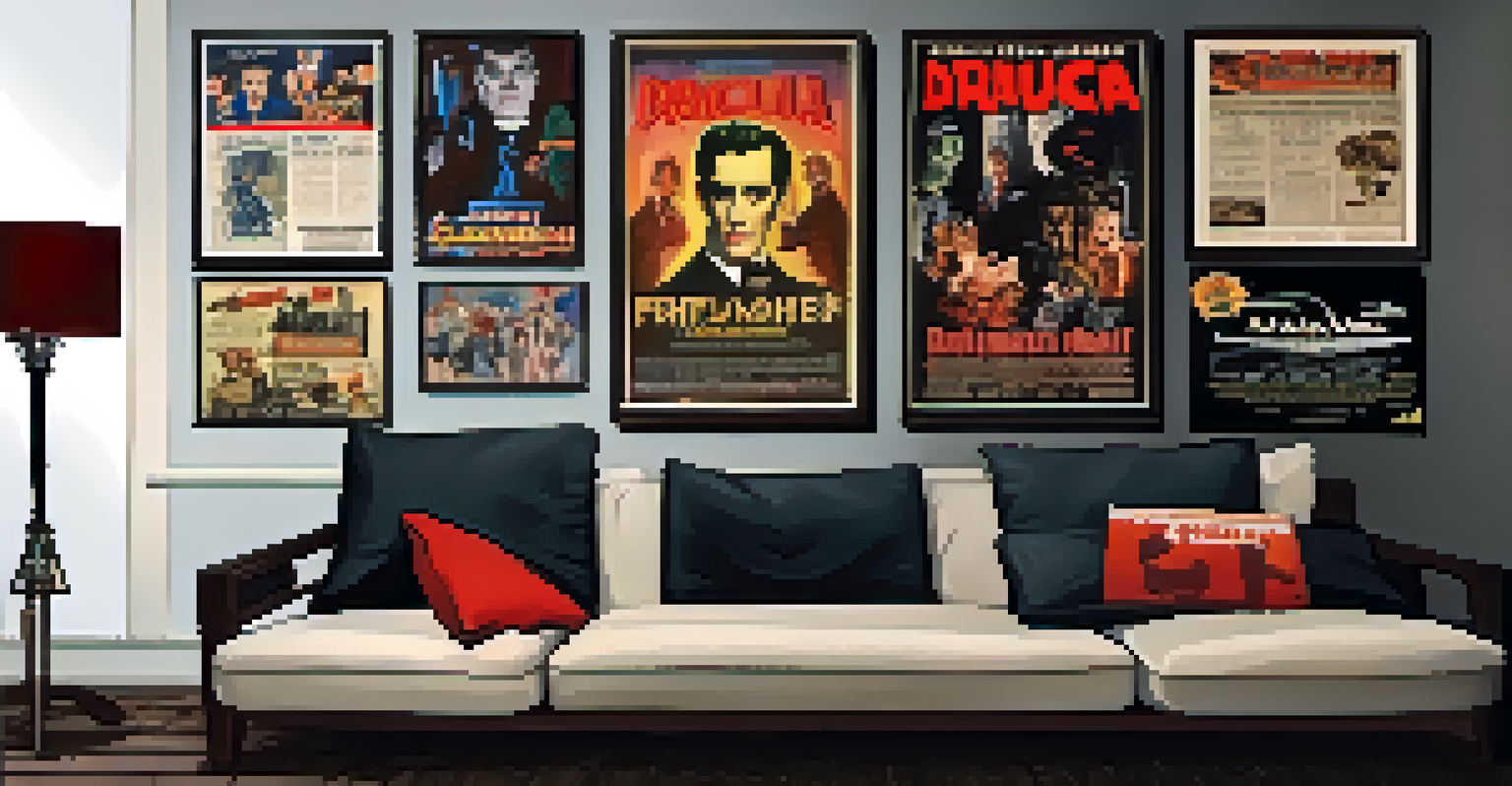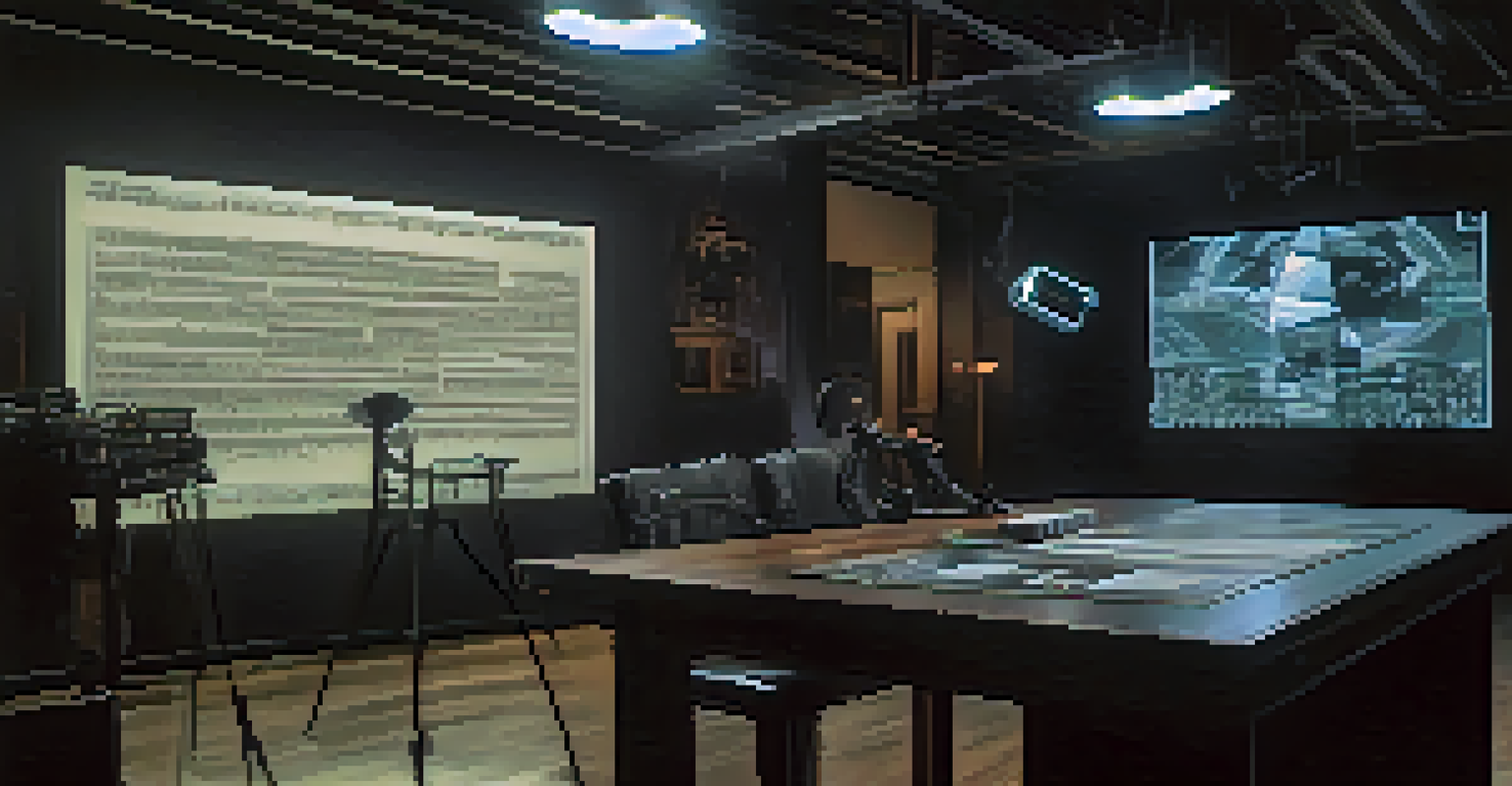The Evolution of Horror: International Influences on Genre

The Birth of Horror: Roots in Folklore and Myth
Horror has deep roots in folklore and mythology, serving as a reflection of societal fears. From ancient tales of monsters to spirits, these stories often conveyed moral lessons while tapping into the human psyche's darker corners.
There is no greater agony than bearing an untold story inside you.
As cultures evolved, so did their horror narratives, often intertwining with local customs and beliefs. For example, in Japan, the tales of yūrei (ghosts) mirror societal issues, such as grief and unresolved conflict, adding layers to the horror experience.
These early influences laid the groundwork for modern horror, demonstrating how universal themes of fear and the unknown connect diverse cultures, and setting the stage for the genre's evolution.
Silent Era Shockers: The Rise of Expressionism
In the early 20th century, the silent film era introduced audiences to the haunting visuals of German Expressionism. Films like 'The Cabinet of Dr. Caligari' used distorted sets and exaggerated performances to evoke a sense of dread and madness.

This artistic movement significantly influenced horror aesthetics worldwide, emphasizing psychological terror over mere shock. The play of light and shadow in these films created an atmosphere that resonated deeply with audiences.
Horror's Cultural Foundations
Horror narratives have evolved from ancient folklore and mythology, reflecting societal fears and moral lessons across diverse cultures.
As filmmakers adopted these techniques, the genre began to take on a more sophisticated narrative approach, exploring themes of identity and fear, which would continue to shape horror cinema in the decades to come.
Universal Monsters: Global Icons of Fear
The 1930s marked the golden age of horror with Universal Studios' iconic monster movies. Characters like Dracula, Frankenstein, and the Mummy were not just terrifying figures; they became cultural icons with universal appeal.
Horror is about the unknown, the fear of what we can't see or understand.
These films drew from international folklore and literature, showcasing how horror can transcend cultural boundaries. For example, Dracula, based on Bram Stoker's novel, was inspired by Eastern European myths, bringing a taste of global horror to American audiences.
The success of these films helped solidify horror's place in popular culture, proving that fear is a universal language, and setting the stage for future innovations in the genre.
Psychoanalysis and Horror: The Influence of Freud
The mid-20th century saw horror delve into the complexities of the human mind, heavily influenced by the works of Sigmund Freud. His theories on the unconscious and repressed fears found their way into films, leading to a more psychological form of horror.
Movies like 'Psycho' and 'Peeping Tom' explored the dark motivations behind seemingly ordinary characters, turning the mirror on society's own fears. This shift highlighted the notion that the most terrifying monsters often lurk within ourselves.
The Evolution of Horror Cinema
From silent film expressionism to modern hybrid genres, horror has continuously adapted, blending styles and themes to resonate with contemporary audiences.
By integrating psychological elements, filmmakers added depth to horror, allowing audiences to engage with their own fears and anxieties, thus broadening the genre's appeal.
International Perspectives: The Rise of Global Horror
As globalization progressed, horror films began to emerge from diverse cultures, each reflecting unique societal fears and traditions. Japanese horror, epitomized by 'Ringu' and 'Ju-on,' introduced audiences to supernatural elements steeped in local folklore.
Similarly, South Korean cinema brought fresh perspectives with films like 'The Wailing,' blending horror with social commentary and cultural elements. These films showcased how horror can serve as a lens to understand societal issues across the globe.
This international exchange has enriched the genre, allowing for a tapestry of horror that draws from a wide array of influences, creating a more inclusive and diverse cinematic landscape.
Modern Horror: The Blending of Genres and Styles
In recent years, horror has become increasingly hybrid, blending with other genres like thriller, science fiction, and even comedy. This evolution reflects changing audience tastes and the desire for innovative storytelling.
Films like 'Get Out' and 'A Quiet Place' showcase a mix of social commentary and traditional horror elements, pushing the boundaries of the genre. These films not only entertain but also provoke thought, addressing issues like race and communication in unique ways.
Global Perspectives in Horror
The rise of international horror films highlights unique cultural fears and narratives, enriching the genre with diverse storytelling from around the world.
This blending of styles has revitalized horror, making it relevant in contemporary culture while continuing to pay homage to its diverse roots.
The Future of Horror: Technology and New Narratives
As technology advances, so does the potential for new storytelling methods in horror. Virtual reality and interactive experiences are beginning to redefine how audiences engage with fear, allowing for immersive encounters that heighten emotional responses.
Moreover, the rise of streaming platforms has democratized horror filmmaking, giving voice to underrepresented creators from around the world. This shift promises a future filled with innovative narratives that reflect a myriad of cultural perspectives.

As we look ahead, the evolution of horror will undoubtedly continue, driven by technological advancements and the ever-changing landscape of global culture, ensuring that fear remains a compelling and relevant theme.